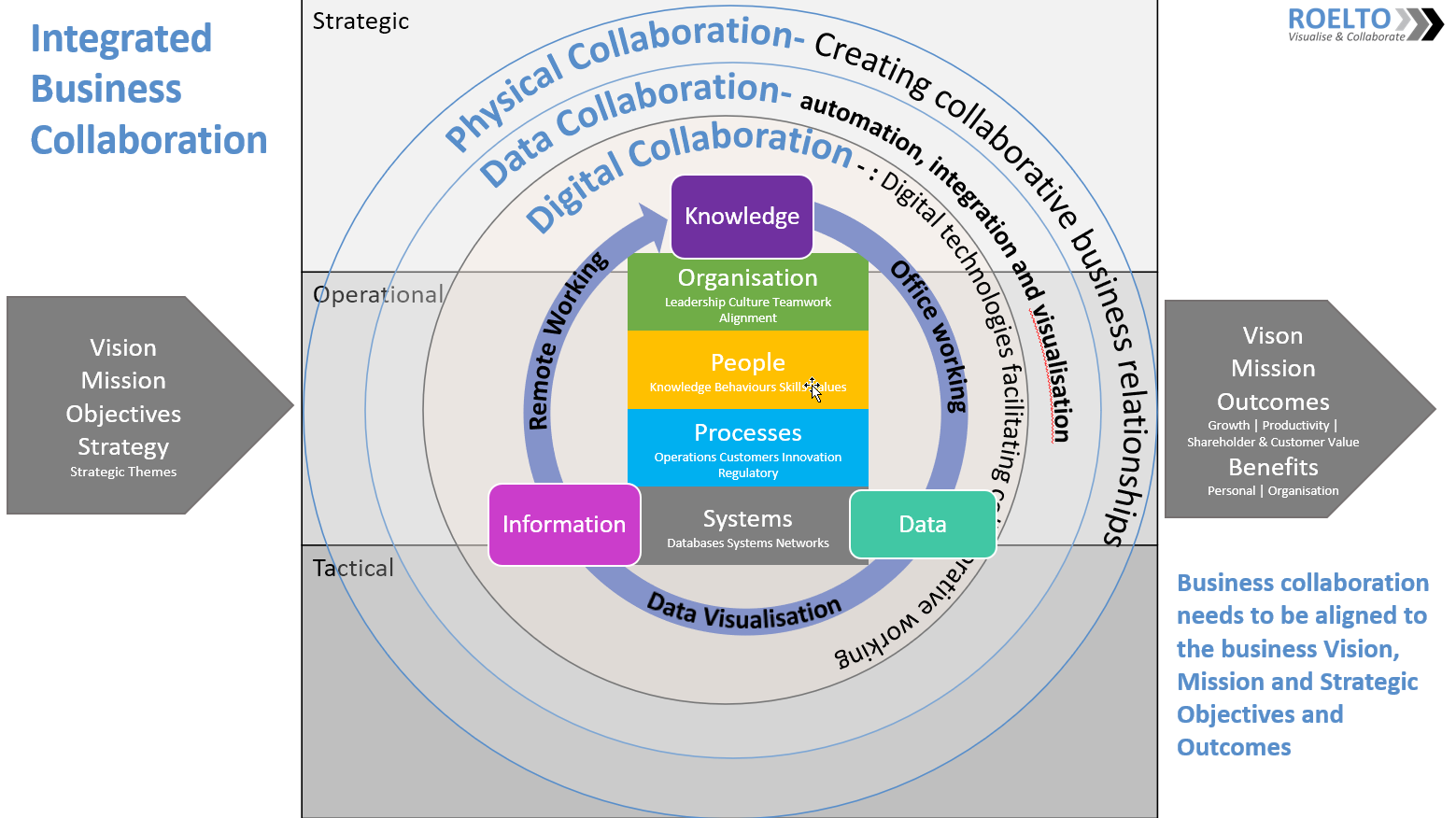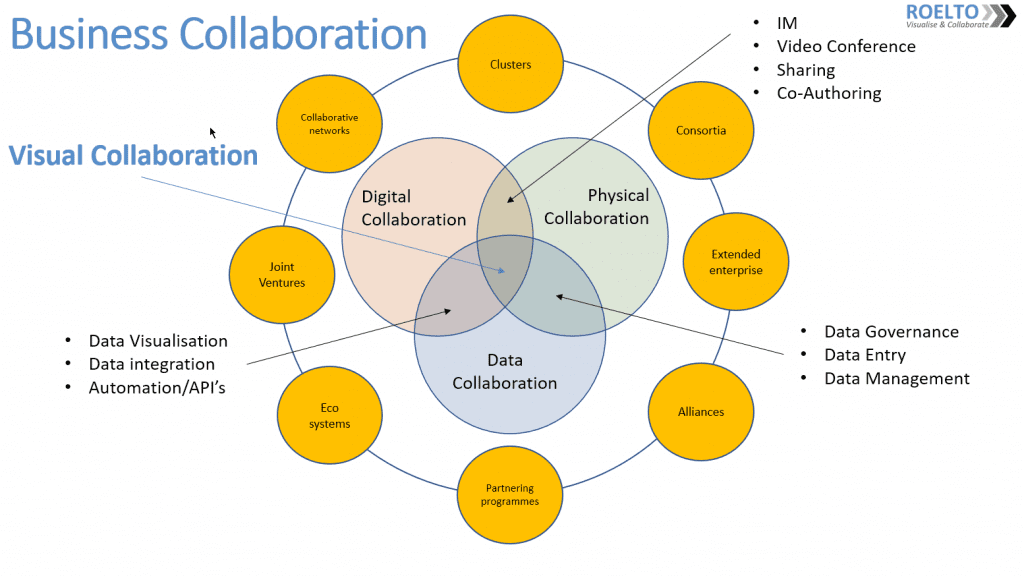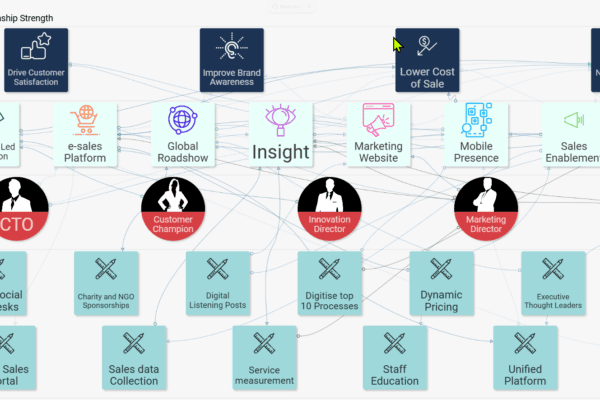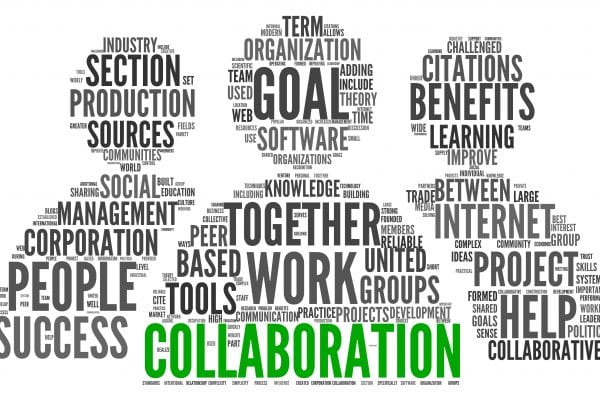Work More Collaboratively
I wonder if you are aware of the increased productivity you can make if you set your business to work more collaboratively using some simple yet incredibly powerful strategies?
When you are a relatively small organisation located in one place with limited external business partners and suppliers, collaborative working is much easier to do, – it just happens.
Everyone gets to know Sally does the finance and Trevor is the quality control, which documentation and systems to use and the correct business processes to follow.
It gets more complex and less collaborative as the numbers of people, tasks, processes, external organisations and systems increases.
This is especially so if there is no collaboration governance within your organisation. As your workplace gets more complex with activities being performed in different locations and time zones by different people and organisations, your ability to get work done right first time and quickly becomes more challenging.
Collaborative Approach
Developing a collaborative approach which helps you govern how people should work within a framework can help you mitigate the issues identified above and increase your level of collaborative working. Here are several reasons and benefits for implementing collaboration governance:
Collaboration Benefits
- Having an “over arching” way of working is important if all your processes, people and systems are to work in harmony – it’s a bit like having a conductor in an orchestra
- There are many processes and procedures to follow – all of which individually work (to a degree – there is always room for improvement). Making sure that a single or individual decision does not have a negative impact is crucial for your collaborative working to continue and improve
- In projects and business generally, people are completing Before Action Reviews and After Action Reviews, but seldom are these lessons shared across the organisation. Sharing knowledge, information and data is critical to support continuous improvement.
- Data and information management is an every minute activity now – creating, using, filing, archiving and retrieving it cannot be left ungoverned. Data is a valuable intangible asset which you can visualise to help uncover insights and simplify complex decision making
- To work more productively people are always looking for the new shiny tool that will make it all better. No it won’t unless you have a collaborative working approach that is governed. All that happens is that you increase your non collaborative working approach! Taking an integrated physical, digital and data collaboration approach to deliver a “visual collaboration platform” is essential.
- When you work with external partners and suppliers there needs to be a consistent way of working, especially when you are working with people internally and externally. Having joint governance and ways-of-working helps to deliver mutual value, objectives and outcomes successfully.
- Making sure that the correct governance levels are in place so that business decisions and changes are reviewed and evaluated strategically, operationally and tactically ensures collaborative working is optimised at all levels within your business.
Collaboration Governance
When you are trying balance the various strategic initiatives and normal day-today business activities, along with other personal development programmes such as empowerment or operating in matrix organisation with cross functional groups delivering projects, whilst trying to achieve your personal objectives, can be very challenging for you, if not confusing.
Dealing with strong personalities and external actions which are outside of your control only adds further “barrier and constraints” to your collaborative working.
Collaboration Alignment
A major part of collaboration governance is dealing with the relationships first and foremost, followed by the processes and technology. Not that the last two are not important, they are but collaboration is about people working together to deliver a better outcome than if you were to do it individually.
A key task is to sure you have “sufficient collaboration alignment” with all stakeholders in your business and your partners. Getting alignment of interests, business and project objectives with the desired outcomes is part of your ongoing performance management.
The integrated collaboration model below shows how this can be achieved.
Collaborative working relationships
There are various types of relationships that you will need to engage with and can .
Identifying your relationships and the value that they represent to your business is one of the first steps for you to undertake. Once you have done that assessing your collaboration competencies and the behaviours that are required against your current capability and maturity as an organisation and identifying individuals who will be involved in these relationships is an important step to creating better collaborative relationships.
One way to help you do this is to use ISO 44001 (BS 11000) Collaborative business relationship management systems – requirements and framework.
Although ISO 44001 (BS 11000) is a specification, it is a framework which allows you to adapt it. To make it even easier to use I have put this into a more visual format for you so you can easily discover your collaborative behaviours and maturity both at an organisational and individual level.
Maybe you haven’t thought of the different ways that ISO 44001 (BS 11000) can help your business develop improved collaborative working within your business yet.
Let me share with you a collaborative approach that you can start to use immediately and help improve your collaborative working.
Keep on collaborating,
Jason
Complimentary ISO 44001 Collaboration Discovery Call
Ready to Improve Your Collaborative Working
Scroll the events below, select “Complimentary ISO 44001 Collaboration Discovery Call“, choose a date and time, leave your details and click DONE






